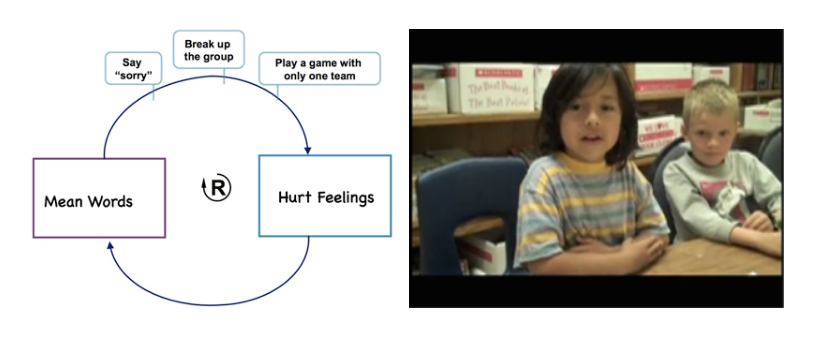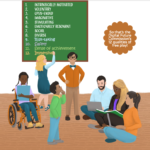
Screen shot from the video Systems Thinking in Schools, 1st Grade Problem Solving
In my last Friday post, I wrote about trading the screen time metaphor for a Big Picture perspective that can point us toward solutions. Jordan Shapiro calls it macro-mind. I’m continuing that theme this week with a book that has been a big influence in my work with young people.
Peter Senge and Daniel Goleman offer a Big Picture framework in the book, The Triple Focus. Peter Senge is known for his lifelong dedication to systems thinking, captured in one of his earlier books, The Fifth Discipline. Journalist and science writer Daniel Goleman helped make emotional intelligence a household word with his 1995 book, Emotional Intelligence.
The Triple Focus has a lot in common with the Digital Play guide written by Jordan Shapiro. If you haven’t read the Digital Play guide yet (I encourage you to read it!), Shapiro offers three different areas of focus in his framework: understanding self and other, recognizing systemic causes, and world, planet, climate. The three focuses that Senge and Goleman emphasize are: focusing on ourselves, tuning in to other people, and understanding the world: systems and systems thinking, or as they put it more simply, inner, outer, and other.
They write in the introduction:
We will describe three crucial skill sets for navigating a fast-paced world of increasing distraction and endangered person-to-person engagement— a world where the interconnections between people, objects, and the planet matter more than ever. Think of these skill sets as a triple-focus— inner, other, and outer.
Goleman describes the first two skill sets:
inner focus: focusing on ourselves— on our interior world, connecting with our sense of purpose and deepest aspirations, understanding why we feel the way we do and what to do about those feelings. Inner focus holds a key to a purposeful life, to concentrating on the task at hand, ignoring distractions, and managing our disturbing emotions.
other focus: tuning in to other people, or empathizing, being able to understand another person’s reality and relating to him from his perspective, not just from our own. Such empathy leads to caring and to the ability to work together— keys to effective, connected relationships.
Senge describes the third kind of focus:
outer focus: understanding the larger world, the way systems interact and create webs of interdependence, whether this interaction is in a family or an organization, or the world at large. This understanding requires systems thinking, not just the simplistic “A causes B,” there-is-a-right-answer thinking of traditional education.
I think you can see why I pair the Digital Play guide with The Triple Focus. Shapiro, Senge, and Goleman all shine a light on the relational domain—our relationships with ourselves, each other, and the world. And all three remind us that fluency with systems is essential to understanding the problems we have and designing ethical solutions. For example, check out these first graders applying what they’re learning about systems thinking and reinforcing feedback loops. (Make sure to watch the video with the kids in action on the Waters Foundation website—Waters Foundation has been doing excellent work creating tools and resources to make systems thinking accessible. Seriously, take the 2 minutes and 8 seconds to watch the video. It is awesome!).
Here’s an invitation. Consider the triple focus in your own personal relationship with technology. Where are your current strengths and weaknesses? How can your strengths inform the conversations about tech in your family? How might your weaker areas be making conversations with your kids about technology less effective than they could be? Write me (to respond, use the Contact form in the About section) to share your thoughts. If you’re interested, I’ll schedule a video call with you to talk about it together. I look forward to hearing from you.


